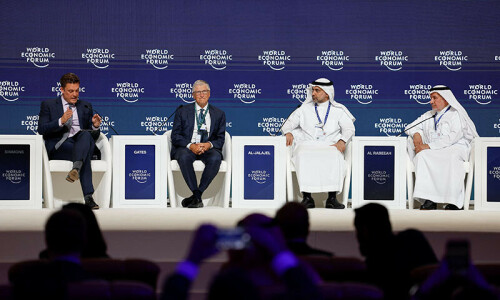PARIS Renewed drilling by US oil producers is keeping a ceiling on a global crude price recovery, cutting into the impact of deep reductions by other major producers, Opec said on Monday.
In its latest oil market report, the Organisation of the Petroleum Exporting Countries said its members last month reduced output by 890,000 barrels per day according to secondary sources.
The International Energy Agency (IEA) said last week that the initial rate of compliance with a landmark deal to reduce the global oil glut was 90 per cent.
The deal, agreed last year and in effect since January, called for the Opec cartel and some non-Opec countries to reduce output by about 1.8 million barrels per day (mb/d).
The oil price gained 73 cents in January from December to $52.40, according to the Opec’s reference basket, but would have risen more if the oil price recovery had not attracted high-cost American producers back to the market, the cartel said.
“Production adjustments by Opec and some non-Opec producers supported the market, although gains were capped by increased drilling activity in the US,” it said.
Analysts have put the breakeven level for US shale oil producers at around $50 per barrel, which means pumping oil is profitable again at current price levels.
Among Opec members, crude output decreased the most in Saudi Arabia, Iraq and the United Arab Emirates, while Nigeria, Libya and Iran increased production.
The world’s total oil supply fell by 1.29 mb/d in January, Opec said citing preliminary data.
Opec’s share in total production stood at 33.5pc.
COMPLIANCE ‘EXCELLENT’: Meanwhile, Opec revised upwards world oil demand growth for 2016, saying it was now estimated at 1.32 mb/d and expected to continue strong this year, at 1.19 mb/d.
This means the world’s oil markets will continue to rebalance, Opec predicted.
“In 2017, oil demand growth is assumed to remain healthy with potential growth estimated at 1.2 mb/d, well above the ten-year average of 1.0 mb/d,” the organisation said.
Main factors supporting the scenario are strong global economic growth, solid demand from the road transport sector, and expectations for high vehicle sales in the US, Europe, China and India.
Dampening demand will be progress made in fuel efficiency, potential reduction in subsidies for oil purchases and switches to other fuels, Opec said.
Investors greeted Opec’s report as a confirmation of the IEA’s estimate of high output cut compliance.
Earlier Monday, the Kuwaiti oil minister called Opec’s compliance “excellent”, adding that non-Opec producers had made good on about half their pledged cuts so far.
“Opec compliance with the output cuts is excellent ... Compliance has reached 92pc,” said the minister, Essam al-Marzouk, who chairs a committee tasked with monitoring the agreement.
Marzouk attributed the relatively low non-Opec implementation rate to previously agreed export commitments.
“We understand that the compliance of non-Opec producers will be gradual through the months of April and May,” Marzouk said. “We hope for full compliance from all producers.”
BUT IS IT ENOUGH? But Craig Erlam, an analyst at Oanda, said that the oil market may need more reductions before supply and demand can even out.
“While this level of compliance is unusually strong, many still believe the agreement to cut 1.8 million barrels per day until June will still not be enough to bring the market back into balance,” Erlam said.
The oil price fell Monday, with US benchmark West Texas Intermediate down 74 cents on the day $53.12 a barrel while Brent North Sea slipped 96 cents to $55.74.
Dealers attributed the fall to worries about signs of rising US production which they said may require deeper Opec cuts to keep the oil price recovery alive.
“The direction of crude is largely going to be dictated by which comes first: A sharp rise in US production, or an extension/increase to current cut levels,” said Joshua Mahony at brokers IG.
Published in Dawn February 14th, 2017













































